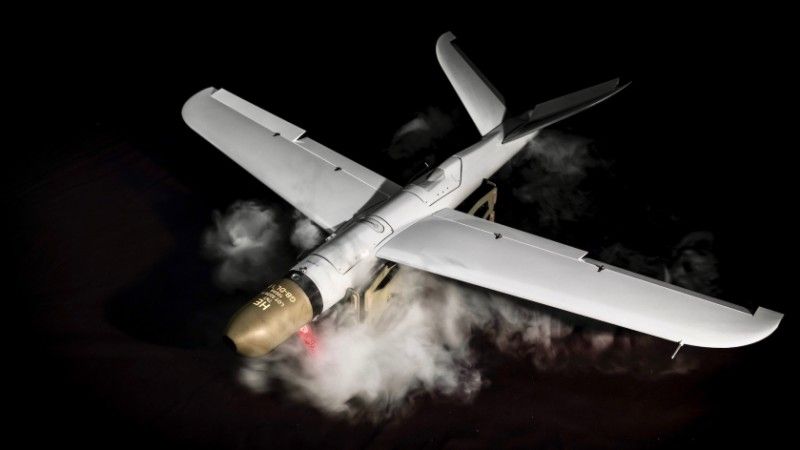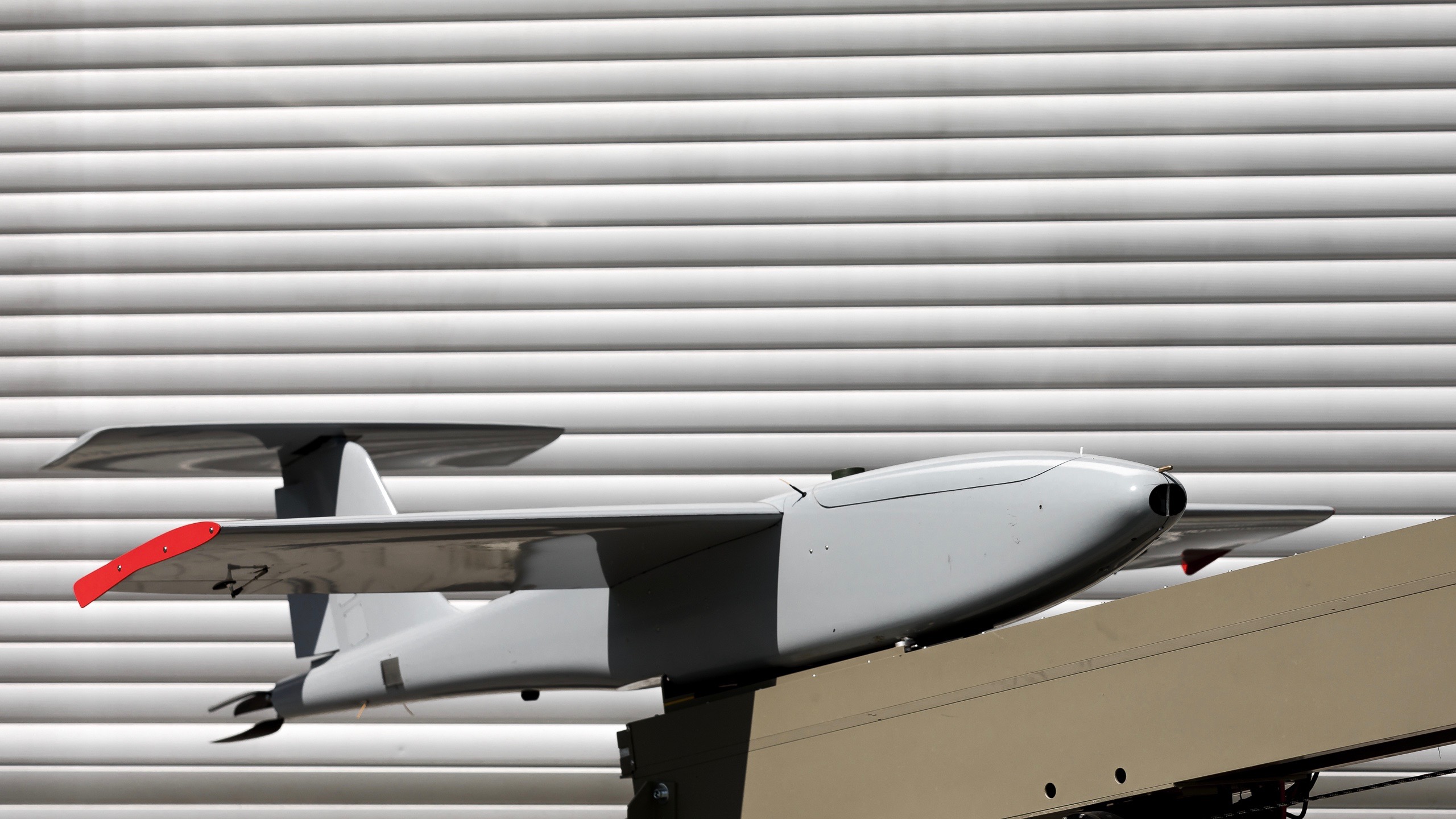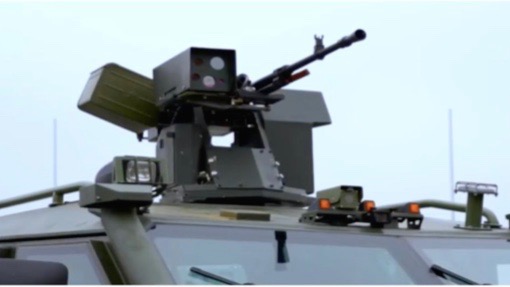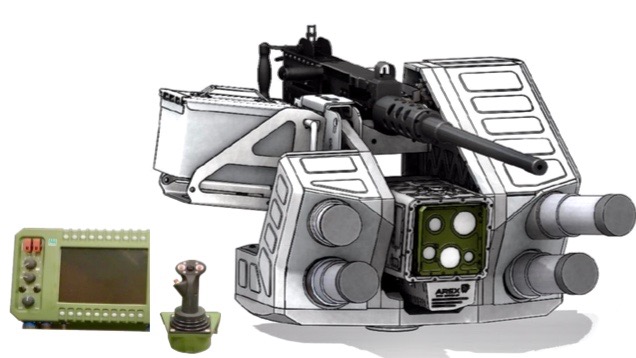Industry
WB Group’s Smart Swarm: Against the A2/AD Systems

Using unmanned strike/reconnaissance drones, including low-cost loitering munitions, makes it possible to breach the A2/AD area, thus enabling the operator to employ further, decisive weapons systems to widen the „hole” in the A2/AD bubble. Multi-Layered A2AD Penetration System/Aerial Smart Swarm system (Wielowarstwowy System Przełamania A2AD/Powietrzny Inteligentny Rój, designated W2MPIR) designed by WB Group is a solution that provides capabilities as such - as writes Mateusz Multarzyński.
W2MPIR (also known as the Vampire) has been presented by Piotr Wojciechowski and Adam Bartosiewicz, during a meeting for the journalists, organized by the WB Group's management. It is an innovative strike/reconnaissance system developed in Poland, designed to suppress enemy air/missile defence systems. The WB Group declares that the system is fairly economical. At a low cost, it makes it possible to neutralize and destroy far more expensive assets, such as the enemy EW systems.
The solution, forming a smart swarm, includes WB's UAVs - both the loitering munitions (Warmate 3.0, and Warmate 2), as well as multi-role reconnaissance platforms (Flyeye, FT-5 Łoś), capable of detecting, locating, and jamming electronic sensors and radars.
Poland remains the sole owner of IP rights associated with the system.
Adam Bartosiewicz specified several objectives adopted when the W2MPIR system was created:
- Creating a cheap, yet precise strike asset (cost-effective);
- Reaching the level of autonomy allowing the system to neutralize the designated targets on its own;
- Capability to use several platforms to attack a single target/group of targets (oversaturation);
- Creating a carrier platform for cheap RF emission sensors;
- Suppressing the A2/AD bubbles by creating HVA decoys, detection and finding radar systems, and kinetic neutralization of antenna arrays, along with the designation of targets for long-range/stand-off strike assets.
All of the above has been achieved through the cooperation of numerous unmanned systems, and through the establishment of a systemic link, between the strike, and the reconnaissance assets. Here, FlyEye and FT-5 provide BLOS communications for other platforms, also providing them with navigation data and acting as laser target designation assets for the loitering munitions. The loitering munitions are drawn from "a magazine of fire support assets", a kind of a swarm, stack, formed by a couple, several Warmate loitering munition drones (with vertical saturation still in place). The reconnaissance assets also detect jamming systems and radars, they can guide the weapons towards the RF emission, and can also act as HVA decoys.
The WB Group's representatives claim that the broad use of mini- and tactical UAV systems should be viewed as a response to most of the challenges posed by EW. These assets may be used for:
- Extending the range of low-emission radio communication assets, making communications among the BF harder to detect.
- Providing forward IMINT/SIGINT/ELINT, to identify and pinpoint the location of the enemy EW assets;
- Directing tube/rocket artillery fires, against EW-active targets;
- Kinetic strikes against EM emissions;
- Creating air threat decoys for radars;
- Saturation strikes against well-protected targets (mainly A2AD system sensors).
This is important for a country like Poland, which remains unable to balance out the potential of the potential adversary, armament-, equipment-, or EW-wise. However, small UAVs could cause trouble for the enemy. Strong EM signatures of the jamming systems may be used for guidance purposes, in the case of cheap effectors.

Warmate 2 is a new, larger version of the proven Warmate loitering munitions system born in 2012. The first NATO procurement of Warmate was made in 2016. The 1000th example of the system would be manufactured in 2021. Let us recall, back in 2017 the Polish Ministry of Defence also procured 10 sets (100 platforms) for the Territorial Defence component. Warmate has also been recently integrated with the Topaz SWARM solution. The 3.0 generation of the system - manufactured now - has been refined, based on the experience of the users - also gathered in combat. The system is characterized by:
- Better firepower;
- Radio module unified with FlyEye;
- Radio-silence mission, with the transfer of control to another operator;
- Radio/operational range: 30/80 km;
- Flight endurance: 70 minutes;
- Low-RPM engine is quieter, and it may be shut down entirely during the engagement, making the UAV a tougher challenge for any sensor;
- Ability to work in any weather conditions;
- Improved maneuverability, thanks to extra control surfaces on the wings;
- Joint operations with FlyEye, Topaz, and U-Gate.
The Warmate 3.0 system, given the size of its warhead, has been designed to act against the so-called HVTs (High-Value Target): persons, antenna arrays of reconnaissance/communications/EW systems.
The new model - Warmate 2 - is a larger variant designed to destroy armored vehicles, command outposts, or other protected targets. The new UAV features a warhead that weighs 5 kilograms. Its operational ceiling is defined as 100-200 meters. The radio range is 180 kilometers, operational range: 30-240 kilometers. Three warheads are available: HE, FAE, and HEAT.
Warmate 2 is a larger system, thus, it is launched from a vehicular platform by a crew of 3.
Warmate TL (Tube Launch) is another novelty among the WB Group’s loitering munitions. This system may be integrated onto a myriad of different platforms: vehicles, helicopters, warships.
Hybrid Łoś
FT-5 multi-role UAV is one of the elements of the W2MPIR system. It may be delivered with one of three propulsion systems: internal combustion, electric, or hybrid. In the case of the electric Łoś, with a flight endurance of 4 hours, the UAV is also launched from a specially designed launcher system. In the case of the hybrid/conventional FT-5s, normal, hardened runway may be used. Both take off, and landing can take place automatically.
The internal combustion variant has flight endurance of 10 hours. The hybrid variant can stay in the air for 14 hours. Although the conventional internal combustion engine is already silent, the hybrid design may perform a target flyover using solely electric propulsion, which contributes to the covert nature of the operations.
The hybrid Łoś has been presented along with a proprietary optronic sensor, with a TV camera (3840x2160, CMOS), cooled thermal imaging system (640x512), laser rangefinder, and laser target designator.

ZSU - Remote Control Weapons Station
Another innovative product is the ZSU remote control weapons station, presented by Krzysztof Bielawski, President of the Management Board at the AREX plant, based in Gdynia and belonging to the WB Group. The company in question specializes in mechatronics, electrical drive control systems, and similar products, some of which have been installed in the Rak 120 mm mortar turret systems.
ZSU has been designed for vehicular/stationary use. The use of digitally controlled electrical motors (with emergency manual control), allows for precise and rapid movement of the weapons so that they are pointed straight at the target.
ZSU is a fully stabilized solution, this refers to the weapons, and the targeting system. From the point of view of the gunner, when ZSU is used, the target is displayed continuously on the monitor, when the armament is employed.
Target tracking may be manual (joystick) or automatic, thanks to an external fire control system. The ZSU (Remote Control Weapons Station) is equipped with a targeting module, featuring a TV camera, thermal imager, and a laser rangefinder.
The control unit makes it possible to program no engagement zones, in azimuth and elevation planes. The electromechanical elements are modular in design. This allows both for easy and rapid integration of new subsystems, as well as for easy maintenance in the field.
Different configuration sets of equipment and armament are available - also when it comes to ammunition feed (left/right side). The ZSU modules may be fitted with a myriad of weaponry, ranging from 5.56 mm, 7.62 mm, or .50-cal. (NSW-T/M2HB) machine guns, 40 mm automatic grenade launchers, or even dual coaxial weapons systems (7.62 mm and .50-cal. machine guns, 7.62 mm machine gun, and 40 mm AGL), and M230LF cannon firing the 30x113 mm rounds. ATGM launcher may be integrated on the ZSU station as well. The larger versions of the ZSU system may also be fitted with smoke grenade dispensers.
Arexa ZSU systems weigh from 130 kg (ZSU-02) to 350-450 kg (ZSU-03).

All components of the ZSU system have been designed and are being manufactured in Poland. This provides the company with full control over its design, and over the configuration of the said design, that can be tailor-made to meet the user requirements.
One should stress that the WB Group currently offers a range of different solutions (C2 suites, BMS solutions, armament modules), that can also be cross-integrated, which creates a capacity to modernize a variety of land platforms and vehicles, thus improving their lethality. The WB Group is continuously enhancing its solutions, making use of the user experience to a large extent.
The AREX company meanwhile, is deeply involved in the development of electromobility. The company develops charging stations (such as the PCB-202 quick charging unit for electric vehicles, powered by the trolleybus power grid). The WB Group as a whole is also working on diminishing its carbon footprint, hoping to get energy from renewable sources, and also working on energy storage solutions.
The systems described here will be a part of the WB Group’s stand at the MSPO International Defence Industry Exhibition that will be taking place in Kielce.
Mateusz Multarzyński
